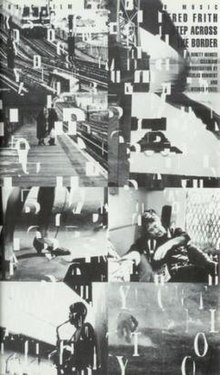Step Across the Border
| Step Across the Border | |
|---|---|

VHS cover of the 1990 RecRec release
|
|
| Directed by |
Nicolas Humbert Werner Penzel |
| Produced by | Res Balzli |
| Written by | Nicolas Humbert Werner Penzel |
| Starring |
Fred Frith René Lussier Iva Bittová |
| Music by | Fred Frith and friends |
| Cinematography | Oscar Salgado |
| Edited by | Gisela Castronari Silvia Koller |
| Distributed by | RecRec (Switzerland) |
|
Release date
|
1990 |
|
Running time
|
90 min. |
| Country | Germany Switzerland |
| Language | English |
Step Across the Border is a 1990 avant-garde documentary film on English guitarist, composer and improviser Fred Frith. It was written and directed by Nicolas Humbert and Werner Penzel and released in Germany and Switzerland. The film was screened in cinemas in North America, South America, Europe and Japan, and on television in the United States, Germany, Switzerland, Austria and France. It was also released on VHS by RecRec Music (Switzerland) in 1990, and was later released on DVD by Winter & Winter (Germany) in 2003.
Shot in black and white, the 35mm documentary was filmed between 1988 and 1990 in Japan, Italy, France, Germany, England, the United States and Switzerland, and shows Frith rehearsing, performing, giving interviews and relaxing. Other musicians featured include René Lussier, Iva Bittová, Tom Cora, Tim Hodgkinson, Bob Ostertag and John Zorn.
The film won "Best Documentary" at the European Film Awards in 1990. A companion soundtrack album, Step Across the Border was also released by RecRec Music in 1990.
Step Across the Border is subtitled:
"Improvisation" here refers not only to the music, but also to the film itself. Humbert and Penzel state in the 2003 DVD release of the film:
The film is not narrated, and the musicians, the music and the locations are not identified. Instead it is a sequence of "snapshots' taken of Frith and musicians he has worked with, rehearsing and performing, interspersed with apparent random images of movement (trains, cars, people, grass) that blend in with the music. The improvised nature of the film and its Direct Cinema approach make it more of an art film than simply a documentary on a musician.
...
Wikipedia
